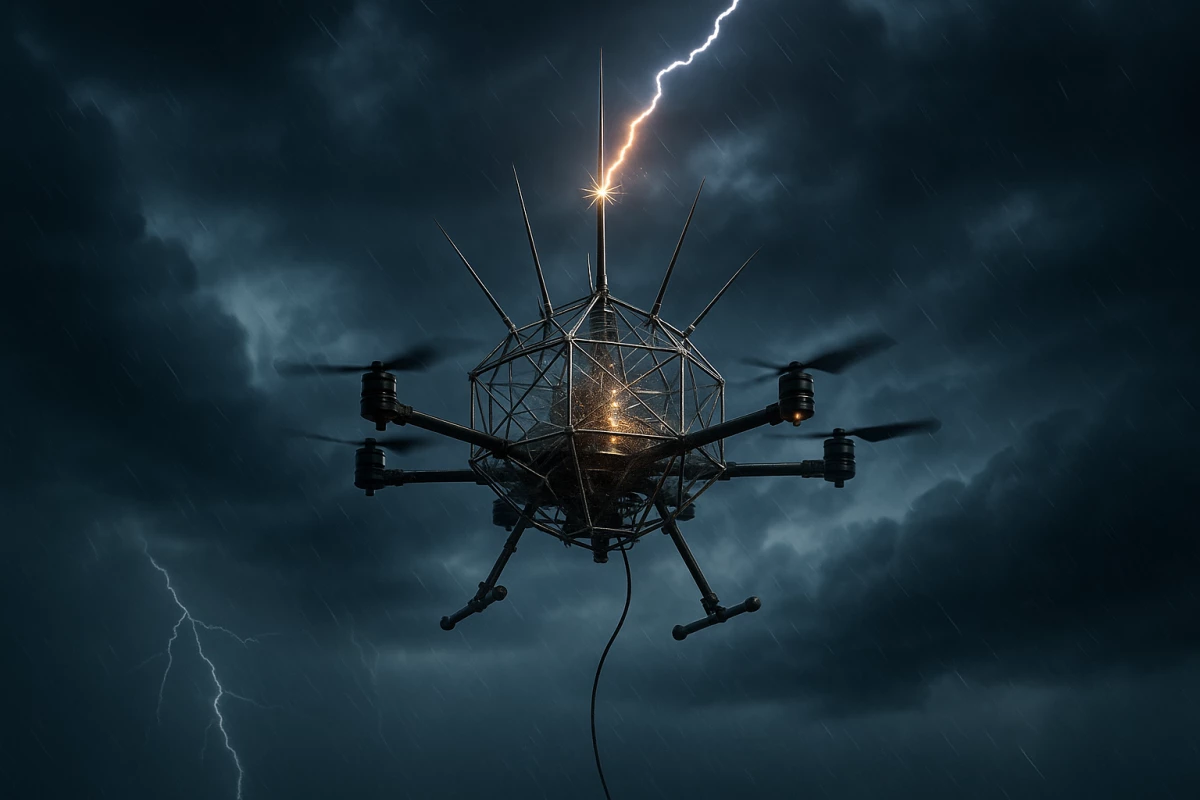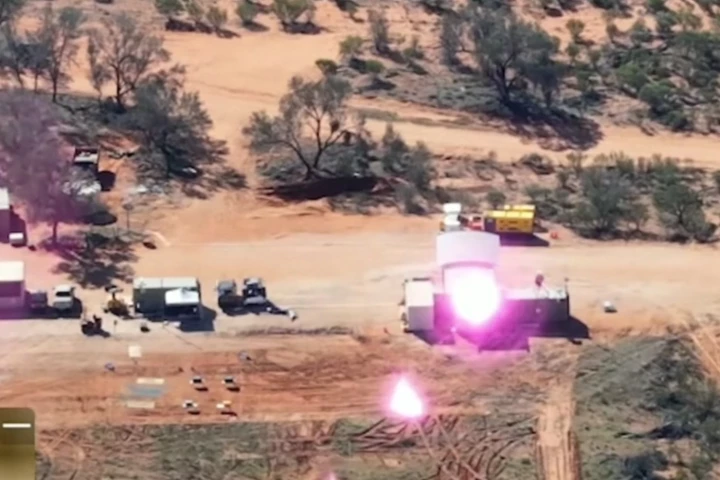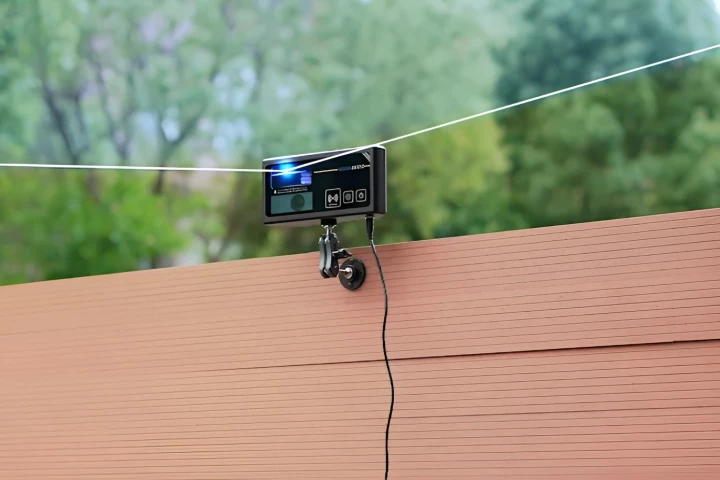In a world first, Japanese researchers flew a lightning-proof drone in a thunderstorm, using it to induce and direct natural lightning strikes. The team is now working on how this flying lightning rod might capture and store lightning energy.
There's a decent bit of energy in the average lightning strike, as you might expect; Real Clear Science estimates about a billion joules. That translates to around 278 kilowatt-hours, or enough to charge a standard Hyundai Ioniq 6 nearly six times over. There are around 1.4 billion lightning strikes every year globally, or about 44 every second, representing some 383.6 terawatt-hours of electricity flashing out of the sky for free. That's nearly 1.5% of global electricity consumption (at 2023 levels) – and quite a decent resource if we could capture it.
Not that we'd recommend you try; according to the UK's Met Office, a typical lightning bolt is about as thick as your thumb, 2-3 miles (3-5 km) long, and the air around it heats up to about five times hotter than the surface of the sun. About 240,000 people get struck by lightning annually, according to some estimates, and while 90% of them survive, it's certainly not fun. And that's just the human cost – property damage from lightning is a billion-dollar-a-year insurance burden in the USA alone.
In Japan, that figure's anywhere from US$0.7-1.5 billion annually. Japanese telco NTT has a lot of infrastructure exposed to this kind of damage, and thus it's had a team working on how to mitigate or prevent lightning damage, particularly in places where traditional lightning rods might be tough to install.
The NTT team has come up with a remarkable airborne solution, in the form of a multicopter drone that looks absolutely bananas:

The key parts that separate this machine from a standard industrial quadcopter are:
- A "lightning-resistant" metal Faraday cage that re-routes lightning around the drone when it's struck, and directs that massive current flow radially, to cancel out the strong magnetic field effects that can be generated.
- A conductive ground wire more than 300 meters (984 ft) long, with a high-voltage switch at the bottom.
- A set of spiky antenna-like lightning rods poking out the top, presumably designed to maximize the chance of a clean lightning strike and direct it cleanly through the cage to the ground wire.
Here's how the experiment worked: the NTT team waited for a suitable thunderstorm, which presented itself back in December. When the electric field strength at ground level indicated a lightning strike was likely to happen soon, they launched the drone, flew it to an altitude of 300 m (984 ft), and hovered it there, with the ground wire switched off, sitting in the intense electrical field of the thunderstorm and building up a large difference in charge between the drone at the top and the ungrounded wire at the bottom.

When they flipped the switch, that charge suddenly found a very easy path to the ground. A voltage of more than 2,000 volts was generated between the wire and the ground, creating powerful electrical field fluctuations in the air around the drone.
This successfully triggered a lightning strike from the storm cloud above, which partially melted the Faraday cage around the drone. The team observed blue flashes of lightning and "popping sounds" from the tether wire winch at ground level – but the drone remained stable and airborne throughout the experience.

The NTT team claims this is "the first time in the world that a drone has been successful in inducing and guiding lightning using electric field fluctuations." It hopes to develop this flying lightning rod technology into a system that can be deployed to protect cities and infrastructure from lightning strikes – particularly structures like outdoor stadiums and wind turbines, which can't easily be protected by integrating lightning rods into their design.
Capturing lightning as a clean, ambient energy source
The NTT team says it's also going to try to bottle the energy in these lightning strikes. "Furthermore," reads a press release, "we will also work on research and development into methods for storing lightning energy, with the aim of storing and utilizing the energy of induced lightning."

The challenges involved should be fairly obvious; where the world's most powerful EV fast-chargers can deliver a full battery from zero within a few minutes, a lightning strike throws several times that much energy down the ground wire within the blink of an eye.
So you can forget trying to stuff all this energy into a lithium battery at once, unless you're looking for an expensive and rowdy fireworks show. Maybe a big bank of extremely high-power ultracpacitors could handle this kind of abuse – but these are so much bigger and heavier than lithium batteries per watt-hour of energy capacity that you'd probably have to drive them around in a semi-trailer or two.
That'd be a real downer for a technology that really needs to be portable to some degree; if it's not, it'll just sit around doing nothing for the vast majority of the time, when there's no thunderstorm immediately overhead.
You couldn't just jam the lightning energy straight into the power grid, either; grids are built for relatively smooth, steady power transmission, not to handle instantaneous power spikes at more than 100 million volts and 30,000 amps.
Assuming the transmission wires didn't heat up and vaporize quickly enough to prevent broader damage, you'd certainly blow up a few transformers at the very least. Those are typically filled with oil coolant, turning them into impressive fiery oil bombs when they go off – there are plenty of entertaining videos on YouTube showing what that looks like:
So if the NTT researchers seriously wants to figure out how to bottle lightning and use it as a clean energy source, they'll have their work cut out for them; they'll need some sort of gigantic buffer system that can capture such an enormous instantaneous energy spike and then drip-feed it into a storage system or into the grid itself in a more civilized fashion.
Good luck with that, guys! We won't be holding our breath.
Still, the flying lightning rod they've designed and tested is impressive enough in its own right, and could certainly find applications protecting different types of infrastructure. Very neat stuff!
Source: NTT







